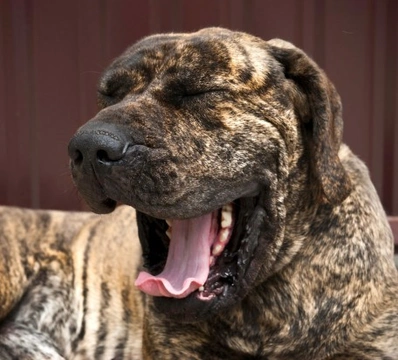
Pet Halitosis: Five Steps to Improve Your Pet's Breath
Halitosis is another way of saying ""bad breath"", and as any pet owner knows it can be a real problem in cats and dogs. With gum disease so widespread in domesticated animals, conquering those stinky wafts can be a major step in promoting your pet's good health. We've all been lectured on the importance of tooth brushing, but what can we do when that isn't enough? Find the answers to this question and more in this article, which will cover the causes of halitosis as well as offer up some fresh solutions to defeat it.
What causes halitosis?
A pet's breath can actually be a good indicator of their general health, as different problems may cause malodorous breath. The most common cause of persistent bad breath in young adult animals is bacterial build up in the mouth, either around the gum line or in pockets between the teeth where food has become trapped. In severe cases, the bad smell can be exacerbated by tooth breakage, dental abscess, or even mouth cancer. Juvenile animals may also suffer from halitosis as they lose their deciduous or baby teeth. This should be temporary.Most interestingly of all, there are some causes of bad breath that have nothing to do with oral health, and these can be very perplexing for owners. In young cats, severe halitosis as well as premature gum disease can be a symptom of FeLV and FIV. Sharp, pungent smells can be indicative of kidney disease, while sweet acetone-type odours are associated with diabetes mellitus. These scents alone won't be proof-positive that your cat or dog is seriously ill, but they are a signal that your pet needs veterinary attention right away - especially if the halitosis is accompanied by rapid weight-loss, changes in urination habits, and changes in appetite.
But aren't pets supposed to have bad breath?
Cats and dogs may not have minty-fresh breath naturally, however that doesn't mean you should chalk up prolonged halitosis to their genetics: always take bad breath seriously and have it followed up by your vet. In the wild, the ancestors of modern-day cats and dogs would clean their teeth by chewing on animal bones or viscera, promoting the flow of salvia and naturally occurring enzymes around the mouth. Today, commercial pet food often does not facilitate enough salivary production to adequately clean a pet's teeth. In addition, domesticated animals live longer than their wild counterparts, and so are more likely to make it to a ripe old age and suffer dental problems as a result.
How can I stop bad breath?
1. First and foremost, you should get a clean bill of health from your vet. As addressed above, halitosis may indicate your pet needs dental treatment in the form of a scale and polish or even tooth extractions. Without a thorough examination it can be difficult to determine whether your cat or dog is suffering from inflammation, sore gums or something else. Remember that your cat or dog's incisors and canines may look perfectly normal, but their molars may be ravaged by infection or disease. Health threats like tumours can affect other parts of the mouth that are difficult to see. Only a full examination will reveal the root cause of your pet's breath and enable you to move forward to correct it. Having your pet's halitosis checked out is a great way to stop plaque build-up or disease before it does serious harm. 2. Check what your pet may have eaten, especially if the bad breath is transient or sudden. Of course, pets that get into the trash are going to have extra pungent breath - but did you know that foreign bodies lodged in the gum line may cause bad smells, too? In addition, some pets may be engaging in coprophagia, the name of a condition in which a cat or dog eats their own faeces or droppings from other animals. The former practice is not an abnormal behaviour (albeit an extremely undesirable one!), as predatory animals are prone to eating poo in order to increase their nutrient intake. Some may do it just because they like the taste. Bad breath as a result of coprophagia may be a signal that you should change your pet's diet or feeding routine. If you catch your pet eating his own faeces, however, you should contact your vet, as that is not a normal behaviour and could be the sign of a more serious complication.3. Introduce an enzymatic or mechanical tooth cleaner into your pet's daily routine. Though it is the gold standard for dental care, you don't have to brush your pet's teeth to help keep them clean. Alternatives include water additives and special biscuits that can help your pet build-up enzymes to break down undigested food and bacteria. There are special diets, like T/D by Hills Science Diet, which help with both feline and canine oral hygiene by preventing plaque build-up. 4. Offer up frequent oral hygiene improving chew treats. When choosing an anti-plaque chew, always make sure your pet isn't able to break it down in a few bites - the longer it lasts, the more benefit he'll get from it. These are more commonly marketed to dogs in form of large bones or chews, but there are increasing numbers of products marketed for cats. Always make sure you choose a chew size that's breed appropriate to avoid choke hazards.5. Feed your pet a good quality food with easy to digest ingredients. For cats, choose foods made from a high percentage of chicken or whitefish and low bulk content. Cats do benefit from some fibre in their diet, but try to avoid foods with high grain contents. Dogs can tolerate more fibre than cats, but still do best on high-meat, low cereal diets. Try to avoid changing your pet's diet frequently, as this can cause gas build up that may exacerbate unpleasant odours.



